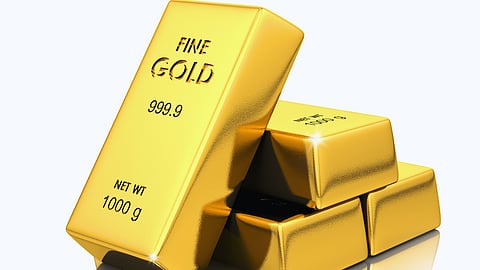By André Basson, CFP®*
The recent surge in the gold price and gold mining shares has sparked a lot of excitement, and rightly so. Returns have been stellar, and the sector played a major role in pushing the JSE to all-time highs.
But is this momentum sustainable, or is it just a temporary spike? Let's explore the current dynamics and what they could mean for your portfolio.
Why central banks are buying gold
Gold has always served as a store of value. For that reason, central banks hold a mix of gold and foreign currency (mainly US dollars and US government bonds) in their reserves.
Developed countries like the US hold a relatively large portion of their reserves in gold. This is partly because they can create more of their own currency if needed. Emerging markets, on the other hand, have historically held less gold and more USD cash for trade purposes.
But things are changing. Due to rising geopolitical tensions and increasing US debt levels, many emerging markets – including China – have started increasing their gold reserves.
When economic power becomes political
After Russia invaded Ukraine, the US imposed sanctions that froze Russian offshore assets and cut access to SWIFT, the global transaction system. The unintended message was clear: US assets can be frozen if geopolitical tensions escalate.
China took note. If it ever moves on Taiwan, similar sanctions could follow. As a precaution, it has been reducing its holdings in US Treasuries and buying more gold. While
China's exact gold holdings are unclear, ongoing purchases could continue to support gold prices for some time.
Other emerging markets have followed suit, albeit on a smaller scale.
The weight of US debt
US government debt now exceeds 100% of GDP. When interest rates rise, the cost of servicing this debt increases significantly. Since 2022, the US Federal Reserve has raised interest rates to curb inflation.
Rates have remained higher for longer, and could climb further if tariffs and deglobalisation continue to drive up prices.
As a result, many central banks have trimmed their US Treasury holdings. With fewer appealing alternatives, gold has become a preferred asset. The euro and British pound face their own challenges.
Even Ray Dalio, founder of the world’s largest hedge fund, has warned that rising US debt could weaken the dollar’s status as a store of value, further strengthening the case for gold.
Ways to invest in gold
There are four main options to consider:
Physical gold: Buying Krugerrands or gold bars is the most conservative approach. However, there are costs involved with storage and insurance. Always use reputable dealers like SA Bullion.
Gold price vs gold shares: Gold shares are highly volatile. Mining companies use leverage, and because they have fixed costs, so any rise in gold price significantly boosts profits. A 10% increase in gold can lead to a 20% rise in gold shares, and vice versa.
ETFs and funds: You can invest in exchange-traded funds that track the gold price or gold shares, both locally and offshore. Locally, the Old Mutual Gold Fund is an option. Offshore, providers like BlackRock/iShares offer several choices.
General equity funds: Many investors are better off using diversified equity funds where fund managers allocate to gold shares as needed. Gold-focused funds are often three times more volatile than broad market funds.
A few key takeaways
Don’t ditch global equities. The US still hosts many of the world’s most innovative companies. Owning them gives you exposure to long-term growth trends like artificial intelligence.
Gold can perform well in a crisis, but it's not inherently conservative. For downside protection, cash and bonds may be more appropriate, and local yields are still attractive.
The world has changed. Gold is no longer just a panic-driven asset. Structural shifts in global finance are supporting its current value and could keep driving demand.
Avoid investing based on fear or FOMO. Gold should fit into a well-constructed plan that suits your goals and risk appetite.
The bottom line
Gold isn't just a hedge for tough times anymore. It’s increasingly seen as a long-term, strategic asset – especially in a world of rising uncertainty and shifting power dynamics.
Used wisely, it can be a valuable diversifier in your portfolio.
André Basson, CFP®, is head of Brenthurst Wealth Paarl. Contact him at andre@brenthurstwealth.co.za

